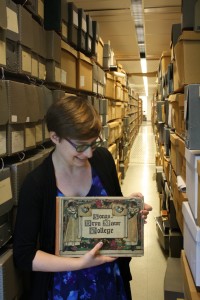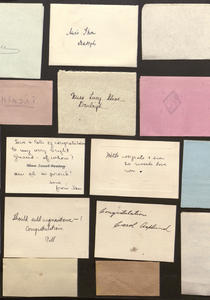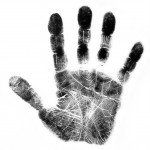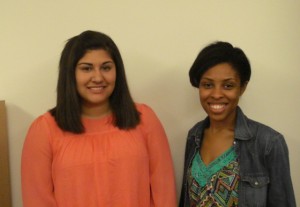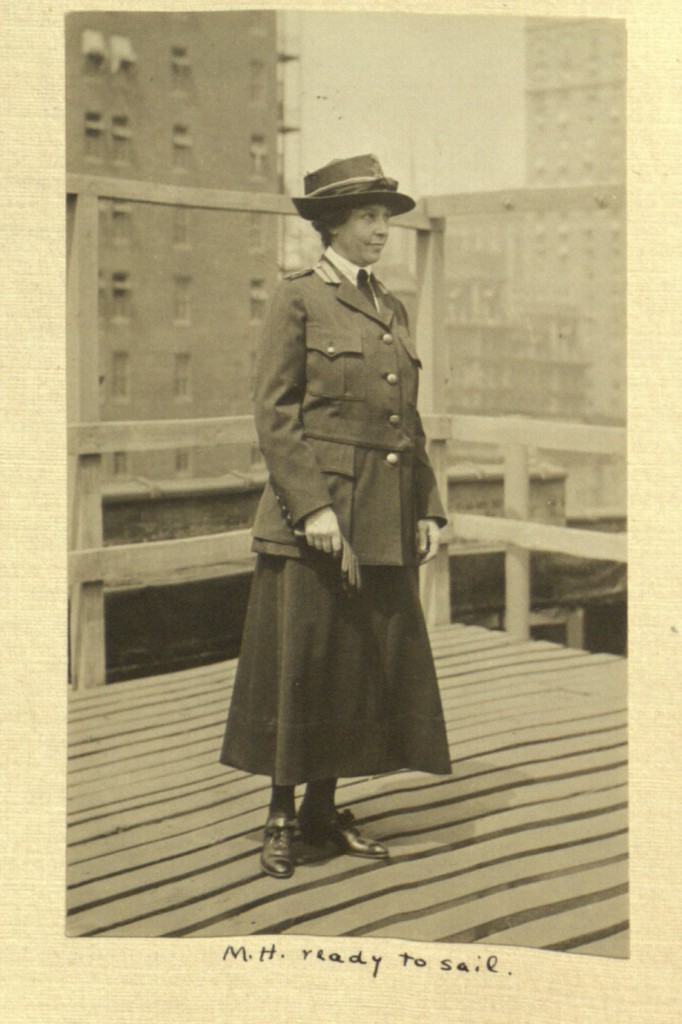
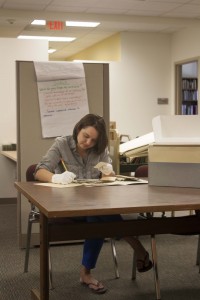
Elizabeth Reilly, Class of 2014, at work in Special Collections
Veteran’s Day is observed every year on November 11th to commemorate the anniversary of the end of World War I, one of the pivotal events of modern history. As a women’s college, Bryn Mawr did not send students or alumnae into direct combat in the early twentieth century — an era before women entered battle alongside men — but members of our college community were very much linked to the turmoil in Europe.
Recent Bryn Mawr College graduate Elizabeth Reilly spent the summer of 2014 researching materials related to World War I in Bryn Mawr Special Collections. As part of her work Elizabeth immersed herself in the papers of Margaret Hall, Class of 1899, who volunteered with the Red Cross near the front lines in France. Using a wide range of sources, including Hall’s correspondence, photographs, ephemera, a bound manuscript that Hall herself compiled upon her return, and other resources from Special Collections, Elizabeth created a digital exhibit, using Omeka, that captures Hall’s unique story almost a century after the fact. Elizabeth’s project is now available on the Greenfield Digital Center website:
“Margaret Hall and Bryn Mawr: On the Front Lines of the Great War“
By drawing on the full resources of the college archives, Elizabeth weaves together several stories and perspectives into a rich narrative. Her exhibit incorporates findings from alumnae files and records, personal correspondence, ephemera, and published sources to build a biography of Hall’s WWI experiences that also highlights the experiences of other Mawrters volunteering in Europe and at home on Bryn Mawr’s campus.
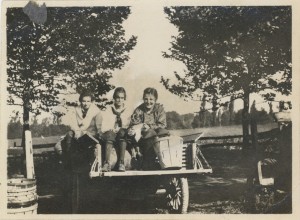
The Bryn Mawr “Patriotic Farm,”1910s.
Elizabeth also reflects on what it means to research physical materials in an age of digital methods and tools. Calling for an incorporation of both approaches, she writes, “navigating and learning from archival collections online can be invaluable in our present digital information driven culture. But,” she argues, “they should be used alongside physical collections whenever possible.”
“Margaret Hall and Bryn Mawr” is the latest student-produced digital project published on the Greenfield Digital Center‘s website, combining archival research and digital writing methods. On both our main site and our blog, we strive to support and publish student work that interrogates the relationship between women’s history and the digital world.
Do you have feedback on this project, or suggestions for new areas of research? Leave a comment below!
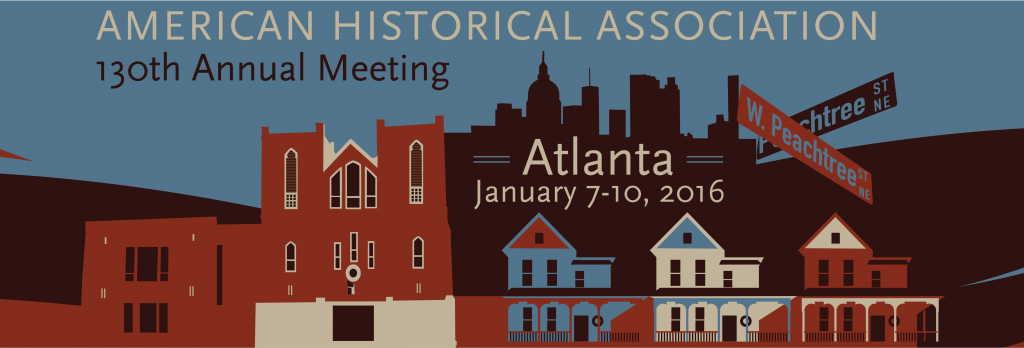 Going to AHA 2016? Greenfield Director Monica Mercado will be co-chairing the Committee on Women Historians mentoring/brainstorming session on Saturday, January 9, and later that day will be speaking about Bryn Mawr College projects on the panel “Teaching History through Archives.” Her paper, “Archives Praxis: Supporting Independent Study and Experiential Learning in Special Collections,” will detail student work including “Black at Bryn Mawr” and “We Are/We Have Always Been,” initiated by undergraduate student researchers:
Going to AHA 2016? Greenfield Director Monica Mercado will be co-chairing the Committee on Women Historians mentoring/brainstorming session on Saturday, January 9, and later that day will be speaking about Bryn Mawr College projects on the panel “Teaching History through Archives.” Her paper, “Archives Praxis: Supporting Independent Study and Experiential Learning in Special Collections,” will detail student work including “Black at Bryn Mawr” and “We Are/We Have Always Been,” initiated by undergraduate student researchers:




